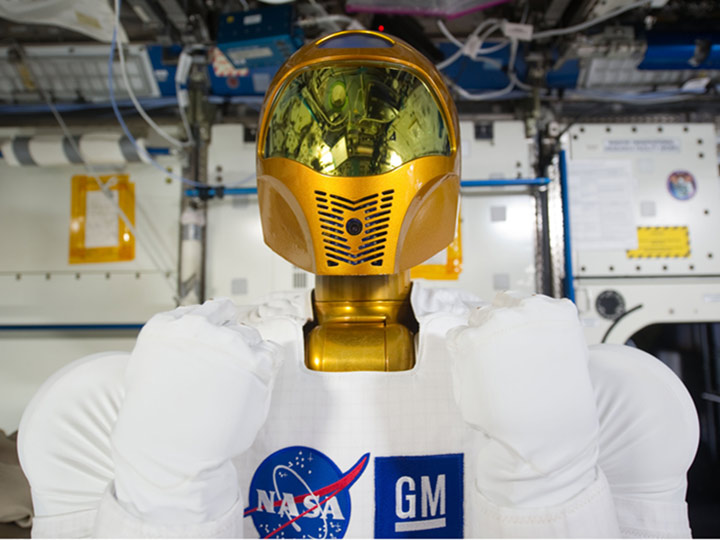Robots in space got a lot of attention over the past few weeks—and for good reason. Aboard the International Space Station, researchers are testing robots to perform a variety of tasks, some of them beyond human capability, some mimicking human capability, and some serving to teach our youth about science and engineering.
Thousands of satellites orbit the Earth daily; however, many of them are on their way to the grave—unless we can repair them easily. Still others would greatly benefit from an efficient refueling system. The Robotic Refueling Mission (RRM) intends to save these dying and fuel-thirsty satellites from demise by developing technologies, tools and approaches for servicing these satellites, even those not originally destined for repairs. A joint effort between NASA and the Canadian Space Agency, RRM made the NASA news last month regarding the first demo of a refueling mission, which used robotic capabilities already aboard the station. (See the NASA story and accompanying videos.)
In a slightly more science-fictionesque achievement, Robonaut (actually, Robonaut 2)—a robot designed to look like a human, with arms and hands and the intended ability to use the same tools used by astronauts on station—completed some simple tests of function and dexterity. For example, in one test within the station’s U.S. National Laboratory, the humanoid robot successfully grabbed onto a handrail and then got out a cleaning wipe and cleaned the handrail. It may not sound like much, but these and other initial tests completed by Robonaut are the first steps toward a new era of robotic capabilities in space. NASA, General Motors and Oceaneering Space Systems are working to design Robonauts that will stay for long periods aboard the station, assisting crew members with tasks and even interacting with them. Robonauts will be especially helpful for extra-vehicular activities. When performed by astronauts, such jobs expose these crew members to higher levels of radiation than when they are within the walls of the station (and it is certainly better for the robots to take that type of damage!).
Finally, the Zero-Robotics competition for high school students is now in a 3D-simulation phase that precedes testing on station. NASA, MIT, DARPA and the ISS National Lab jointly sponsor this education program, which holds several competitions each year for students to design algorithms for Synchronized Position Hold, Engage, Reorient, Experimental Satellites (SPHERES). These micro-satellites serve several purposes on station and are capable of performing various tasks (such as parts of docking and assembly). Programming them involves writing algorithms to command the SPHERES, so educational activities using SPHERES teach students the necessary computer coding. In the first phase of the competition, students wrote proposals explaining their algorithms (this fall’s task involves managing space debris). After completing the current 3D ground testing, students with top scoring proposals will form teams that will send algorithms up for in-space testing aboard the National Lab—a live-streamed event.
These exciting developments for robot technology in space bring us one-step closer to a future where robots will perform many basic tasks and important support functions for our space missions and for daily space station activities. However, astronauts in training do not need to worry just yet: the robots will not be replacing us anytime in the near future. Even when we get past the current limitations to the technology, the robots still will not be able to notice the subtleties involved in scientific research aboard the station (which is a big part of major discoveries—the things that happen that are unexpected) or quickly change their purpose to respond to unexpected or interesting events. Instead, astronauts will be getting something like assistants to help them as we continue to improve our use of the space station over the next decade and beyond—and the technology developed to improve the robots on station will help to advance robotic technologies on Earth as well!





